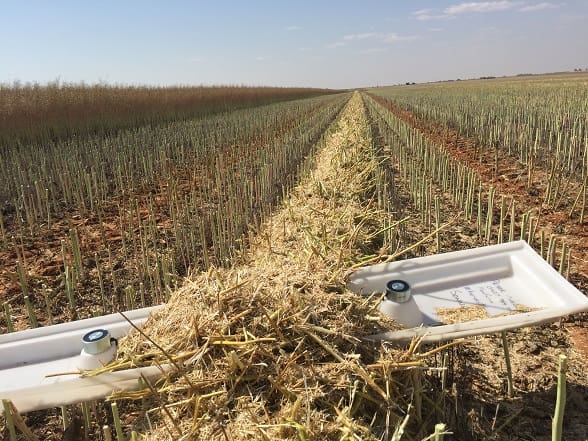SOME canola growers have reported boosting their profits by more than $50,000 in 2018 simply by regularly adjusting harvester settings after measuring canola losses from the back of their harvesters.
Planfarm consultant Peter Newman said an estimated $191 million of canola was lost in this way nationally every year.
“Based on average losses of 150 kilograms per hectare or $75/ha across approximately 2.5 million hectares of this high value crop grown across Australia every year,” he said.
“This estimate is based on measurements made by Western Australian canola growers and is consistent with what has been found in western Canada where canola harvest losses have been measured extensively.
Mr Newman led a GRDC project last harvest aimed at addressing the issue of canola losses from the rear of harvesters.
“WA growers involved with the canola losses project were unaware they were losing grain until they measured actual losses using commercially available drop trays,” he said.
“They were then encouraged to adjust their harvester settings and share their findings and dollars saved using the Twitter handle @harvestloss.”
Mr Newman said one setting at a time should be changed and actual losses measured again after each adjustment to assess impact.
“Harvester settings that influence canola lost include the rotor speed, the gap between the rotor and the concave (separator), the cleaning fan speed, the openings of the upper sieve and the openings of the lower sieve,” he said.
“It’s advisable to measure actual canola losses once or twice a day during harvest, given changing conditions, and to involve the harvester drivers who can pride themselves on aiming to hit the ‘sweet spot’.”
Mr Newman said all harvesters were capable of achieving minimal losses with the right set up and settings, and the aim was not to produce the lowest losses per hectare, but the lowest cost of harvesting per tonne of grain.
“The ideal is to find the optimum point at which harvest efficiency is high and losses are low – the sweet spot,” he said.
The project focused on canola losses from the rear of the harvester and did not consider front losses.
Video: A practical demonstration of how much can be lost and how that loss was measured.
Source: GRDC
To download the GRDC Harvest Losses Fact Sheet, go to https://grdc.com.au/time-to-halve-canola-harvest-losses.


HAVE YOUR SAY